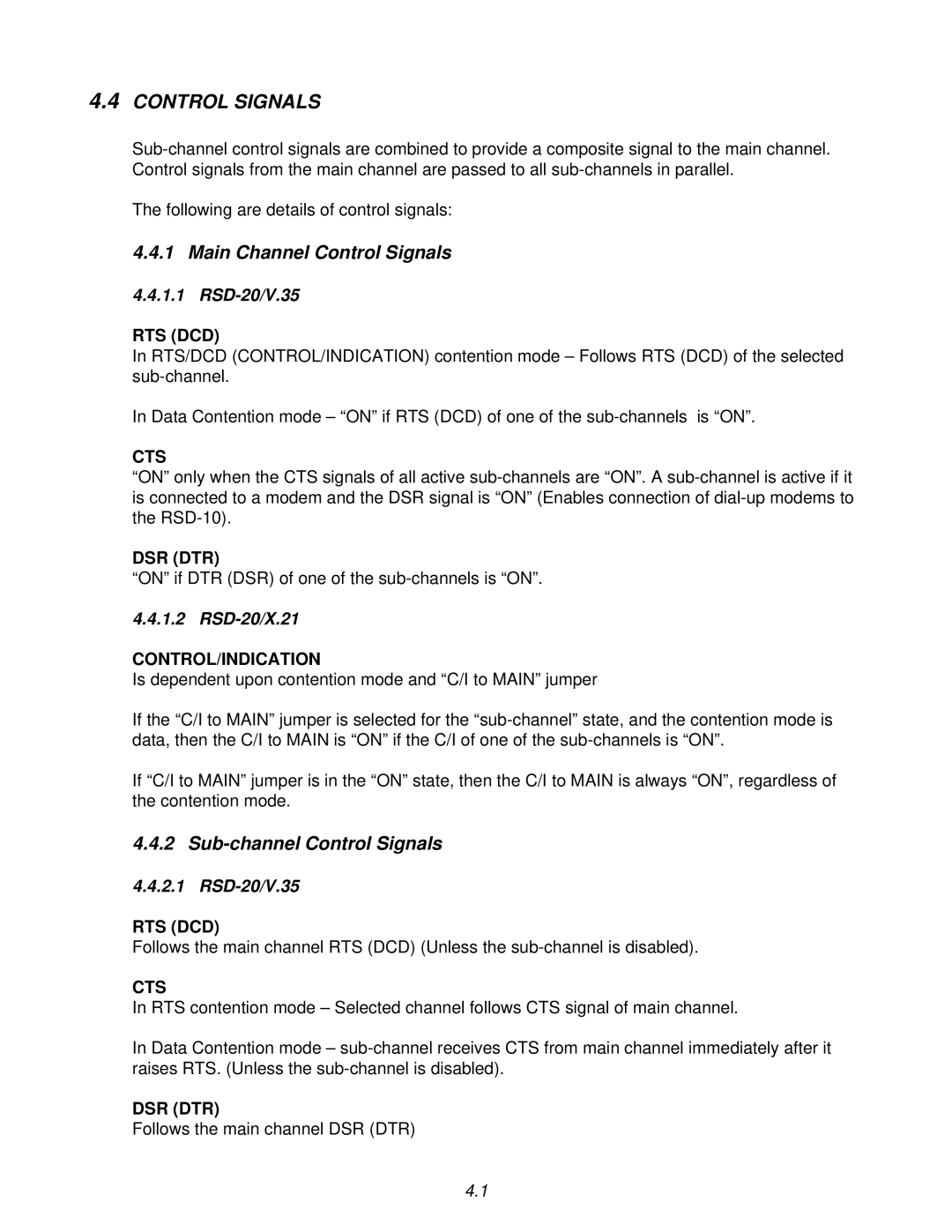4.4CONTROL SIGNALS
The following are details of control signals:
4.4.1 Main Channel Control Signals
4.4.1.1 RSD-20/V.35
RTS (DCD)
In RTS/DCD (CONTROL/INDICATION) contention mode – Follows RTS (DCD) of the selected
In Data Contention mode – “ON” if RTS (DCD) of one of the
CTS
“ON” only when the CTS signals of all active
DSR (DTR)
“ON” if DTR (DSR) of one of the
4.4.1.2 RSD-20/X.21
CONTROL/INDICATION
Is dependent upon contention mode and “C/I to MAIN” jumper
If the “C/I to MAIN” jumper is selected for the
If “C/I to MAIN” jumper is in the “ON” state, then the C/I to MAIN is always “ON”, regardless of the contention mode.
4.4.2 Sub-channel Control Signals
4.4.2.1
RTS (DCD)
Follows the main channel RTS (DCD) (Unless the
CTS
In RTS contention mode – Selected channel follows CTS signal of main channel.
In Data Contention mode –
DSR (DTR)
Follows the main channel DSR (DTR)
4.1
